NEC PA271W - When Accuracy and Consistency Matter
by Chris Heinonen on May 1, 2012 1:55 PM ESTNEC PA271W - Display Uniformity
As we’ve mentioned, NEC goes to great lengths with their PA271W display to make it as uniform as possible. With the sacrifices in maximum light output we hope that we will see a measurable difference on the NEC in both brightness and color uniformity.
The brightness uniformity chart shows results that are far and away the best I have measured to date. The total deviation from the maximum to the minimum value is only 10 nits, and we are used to seeing a swing of 30 or even more nits on this test. The average deviation is only 1.66%, so this is a really fantastic result showing that NEC has managed to engineer a more uniformly bright panel than anyone else.
Measuring the black uniformity is harder, as we have no 200 nits target that the white uniformity has. In this case we wind up with an average black level of 0.35 nits, but a higher standard deviation of 18.7%. The issues fall in the upper-right area of the screen which also had the brightest areas in the white uniformity testing, so there might be a little more light leakage coming in from that area of the panel it seems. Note that this non-uniformity will likely vary by panel as well. Given that the panel is uniformly lit, and that affects the color accuracy to a great deal, I would expect the panel to have a fairly consistent dE across the display.
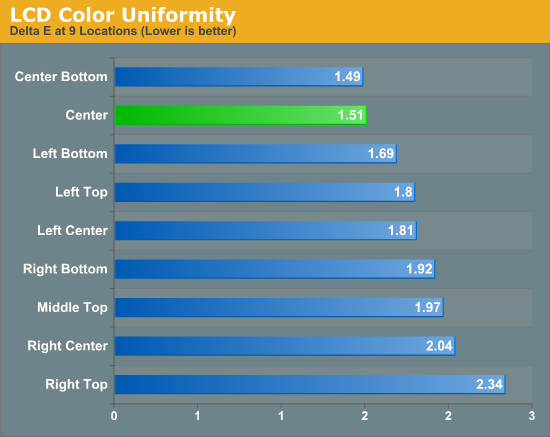
The NEC delivers here again. We wind up with average and median dE values of 1.84 and 1.81, and a standard deviation of only 0.27 dE. The upper right corner seems to have a bit of an issue again, likely due to that lighting uniformity issue, but the rest of the panel is remarkably close together. The colors are all uniform in error across the screen and the issue seems to be a slight rise in grayscale error as you move away from the center. Compared to any other panel I have reviewed, the NEC is far more uniform and will exhibit less of a color shift across the unit, which is important on a screen this size. It still isn’t perfect by any means, but it’s better than anything else I have tested.
I also realized with this review that the vertical axis here was shifting between each review, so I’m going to keep this at 8 for this review, and then see going forward if that is correct. This will make it easier to compare across different displays.


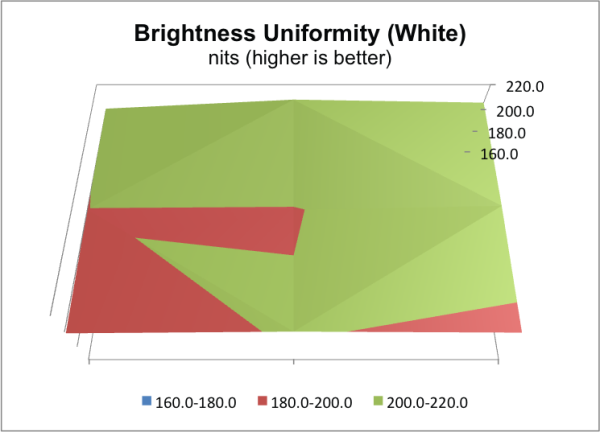
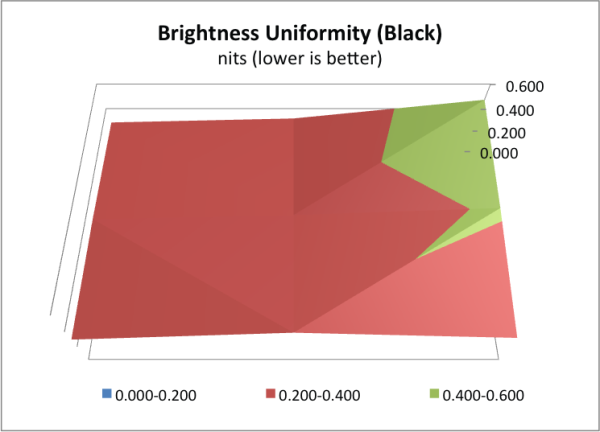
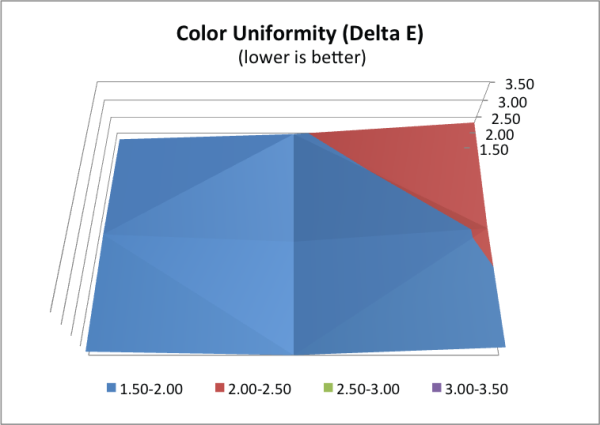
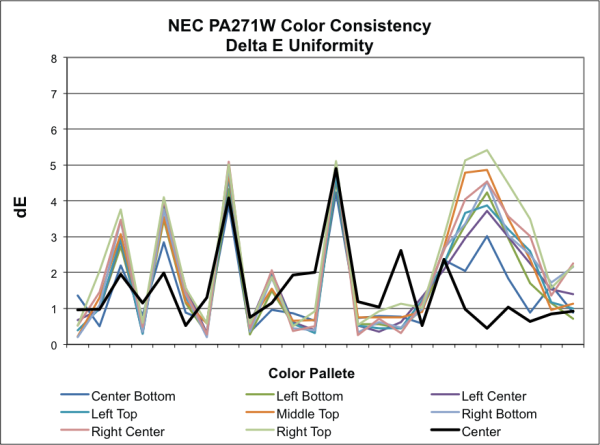








69 Comments
View All Comments
JarredWalton - Tuesday, May 1, 2012 - link
Brian Klug is working on a review I believe. Stay tuned....B3an - Wednesday, May 2, 2012 - link
Next time can you or Brian in his future review mention the fact that these are 16:10 junk, instead of 16:9, and point out why this is so stupid for the area these monitors are aimed at (they should be 2560x1600 res!). Many of which will be people that work in some area of design and would benefit from extra pixels.These things are not for watching movies. For almost anything else including basic things like viewing this very web page, the extra vertical pixels are better.
ectoplasmosis - Wednesday, May 2, 2012 - link
If you're going to go on a bizarre rant, at least make sure you've got your aspect ratios the right way round.theoryzero - Tuesday, May 1, 2012 - link
NEC's page mentions "Rapid Response" or "Response Improve" feature that can be enabled using the MultiProfiler software. Does that feature help with the processing lag?Senti - Tuesday, May 1, 2012 - link
It doesn't. It enables panel overdrive. With it it becomes one of the fastest IPS panels I've seen, but you also get quite bad overdrive artifacts.weiln12 - Tuesday, May 1, 2012 - link
You mention for gaming the HP is the best bet, yet it's worse in lag than the Apple 27". From my quick perusal of the charts appeared to be worse in most categories for color reproduction and everything else.The prices don't seem that far off either based on a cursory Google search of the HP ZR2740w and Apple's given prices.
Could you mind clarifying why the HP is the best bet for gaming, is there something I'm missing?
cheinonen - Tuesday, May 1, 2012 - link
The Apple only works with Thunderbolt, so that's not going to be an option for most gamers, who still use a PC and not a Mac. The HP is incredibly close to the Apple in most numbers, and the lag measurement used for the HP is far more accurate than the one used for the Apple, so they could be closer than the charts indicate.ectoplasmosis - Wednesday, May 2, 2012 - link
The Thunderbolt version isn't the only one available.I'm using a displayport 27" Cinema Display connected to both a PC (DVI) and Mac Pro (mDP) via an mDP KVM switch. By far the best screen I've ever laid eyes on, and crystal-clear with no horrible murky anti-glare coating like almost every other 2560x1440 27" screen.
AeroWB - Wednesday, May 2, 2012 - link
The high gloss display of Apple screen may look fancy and give more punch to the colors, but it can be extremely annoying depending on the room lighting and even in a medium lit room high gloss displays are extremely bad when displaying dark content, as you will see your own reflexion more clearly then the content being displayed.Glossy displays do work well in very dark rooms, but I doubt it is good to work in a dark room and stare into a big light. I do not think it is a coincidence that all professional displays and laptops are non-gloss and in general getting a non-gloss display is the safer option. If color is important glossy screens are a very bad option even if you're careful with the room lighting. it seems to me gloss is so prevalent in the consumer space as it is cheaper to built and looks fancier when displaying bright content. Though it must be said those non-glare coatings do have some influence on the brightness and sharpness of the display though after using my PA241W for about a year I am very happy I did not get the glossy Apple display (which a friend of mine has)
ectoplasmosis - Wednesday, May 2, 2012 - link
The room my ACD's in is far from dark, but is arranged so that screen reflections are a complete non-issue, even with darker content.If you've got control over your environment and lighting then a glossy screen, like you say, gives better contrast, saturation and colour accuracy than an equivalent panel with fuzzy anti-glare coating.
I know which one I prefer, and it's not about looking "fancy" in the least.